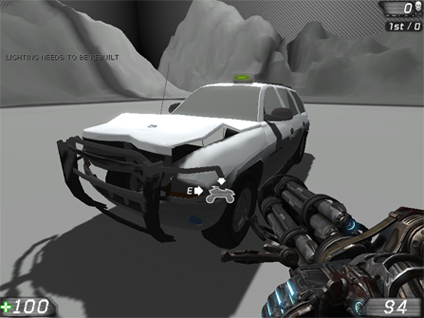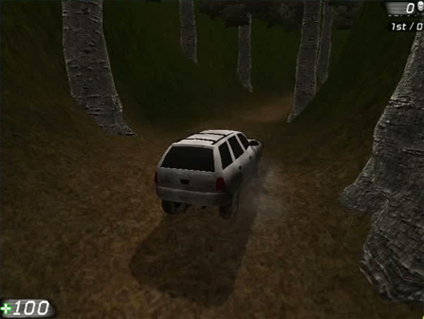

|
It was time to say goodbye to the now six month old original model, and to replace it with the new, improved, and significantly lighter Durango. Back in 3ds Max, I tore apart a copy of the Durango and added dents and general damage to each of the major pieces. These were then imported into Unreal and used to create the effect of damage. Now whenever the car was shot or crashed around too much, Unreal would calculate which bone in the rig was the recipient of the damage, and based on that information would gradually morph in the correct broken mesh. The animation tree was also set up to have damage hinges. These would allow broken pieces to swing and bounce as the car drove, giving the effect that the car could fall apart at any moment. In the future I have plans to continue modeling the interior of the car, and with that added to this mesh the overall effect should be very cool.
|

|

|
Now that the code was functional, it was also time to play with values that would make her drive like an SUV, not like an agile Scorpion. Simply by editing code, which I was beginning to understand at this point, I was able to slow the car down to a more believable high speed, soften the suspension, and cut the turning radius down to it's annoying but more realistic value. The powerful car also felt more torquey than the Scorpion, and did not take kindly to overly abusive driving. If airborne, the tires would slip laterally, or the car may even spin out if pushed far enough. She now had developed her own personality, and it as not as forgiving.
|

|
|













